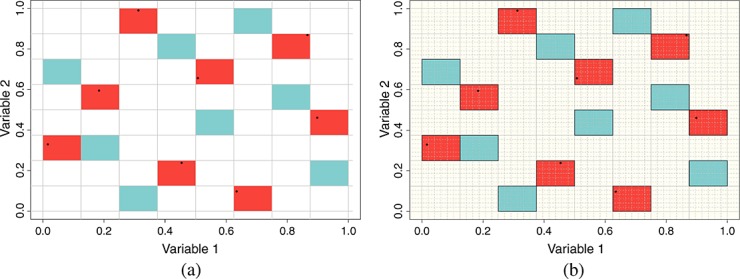Figure 2.

(a) The integer Latin Hypercube (LHC) used to generate the first extension of our example eight-point LHC in two dimensions. The cyan panels highlight the new integer LHC that will be used to generate new points. (b) Dividing each solid in the identified integer LHC into km equally sized solids. One of the mini-solids that has no points along it in either dimension will be chosen at random to contain the new LHC points for each of the larger cyan solids identified by the integer LHC
